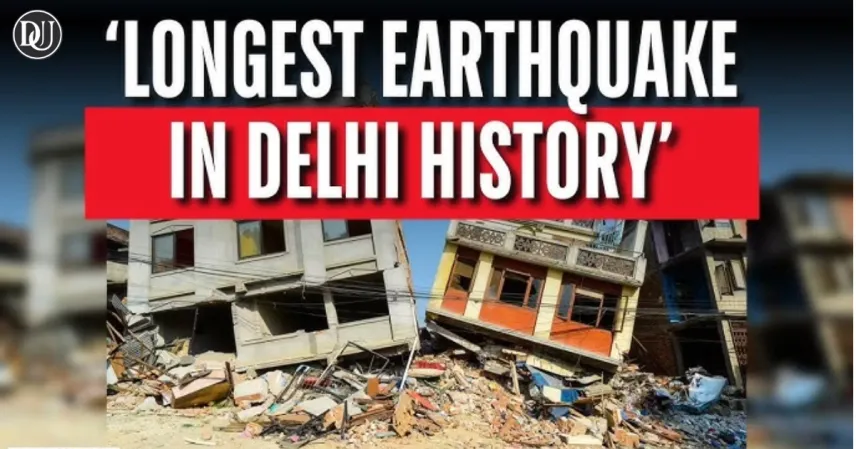On the morning of July 10, strong tremors startled residents across Delhi and the surrounding NCR region. The earthquake struck unexpectedly, prompting people to rush outdoors from their homes, offices, and commercial spaces. It marked another unsettling reminder of the region’s vulnerability to seismic activity.
The tremors lasted several seconds and were felt in areas including Noida, Gurugram, Ghaziabad, and Faridabad. While no casualties or significant damage have been reported so far, the incident left many wondering why such events are becoming more frequent.
What Caused the Earthquake?
According to seismologists, the source of the tremor was traced back to the Hindukush region in Afghanistan. The earthquake had a magnitude of approximately 5.8 and occurred at a significant depth, which allowed the shockwaves to travel over 1,000 kilometers and reach Northern India.
Delhi's infrastructure, especially high-rise buildings, is often more sensitive to distant earthquakes. This quake was a classic example of how geological shifts in neighboring zones can have real consequences in the city.
Delhi’s Seismic Risk Profile
Delhi is situated in seismic Zone IV, which places it at high risk for medium to severe earthquakes. The Indian tectonic plate's continued push against the Eurasian plate causes stress buildup underground. When this pressure is released, it leads to sudden movements or tremors.
This earthquake in delhi has once again highlighted how the capital, despite being densely populated and rapidly expanding, remains vulnerable to tectonic disruptions that originate far away.
Citizens React with Panic and Caution
Immediately after the tremors, social media platforms flooded with posts and videos of ceiling fans shaking, office evacuations, and people assembling in open areas. Many office buildings initiated earthquake drills as a safety precaution.
Parents rushed to schools, businesses paused operations, and emergency numbers received dozens of calls. The Delhi Metro temporarily suspended operations for routine track inspections before resuming normal service.
Is the Frequency of Quakes Increasing?
While there has been an uptick in felt tremors in recent years, experts caution against drawing hasty conclusions. Small to moderate earthquakes may be more noticeable due to increased media coverage and social media amplification. However, many of these events are part of the natural geological process of releasing underground pressure.
Still, each earthquake in delhi serves as a timely reminder of the importance of being prepared, both at a personal and institutional level.
Expert Opinions on Preparedness
Experts believe that Delhi’s disaster preparedness needs considerable improvement. Older buildings, particularly in congested areas, often don’t meet modern seismic codes. Public awareness is also limited, with few residents knowing what to do during or after a quake.
Seismologists and urban planners have repeatedly stressed the importance of structural audits, emergency drills, and public education campaigns to mitigate the risk of injury or panic during future earthquakes.
What Safety Measures Can Help?
Authorities advise the public to follow some basic safety tips during a quake:
-
Drop to the ground, take cover under furniture, and hold on.
-
Stay indoors until the shaking stops, unless you're in an unsafe structure.
-
Do not use elevators during or immediately after an earthquake.
-
Assemble at pre-identified open safe zones outside buildings.
-
Keep emergency kits and contact numbers accessible.
These measures can make a critical difference during high-magnitude quakes or aftershocks.
Historical Context of Earthquakes in Delhi
Delhi has experienced several moderate earthquakes in recent decades. Some have originated from the Himalayas, while others came from Central Asia. A notable quake in 2001 caused minor structural damage, but no major disaster.
The recurring earthquake in delhi pattern reflects a broader geophysical tension in the region. Experts warn that while individual tremors may not cause visible damage, the accumulation of pressure could one day lead to a more serious seismic event.
Government’s Response and Future Planning
So far, the National Centre for Seismology and Delhi Disaster Management Authority have been monitoring seismic activity and issuing advisories. There are ongoing efforts to integrate seismic resistance in future construction through updated building codes.
However, gaps remain. Retrofitting of older buildings and expanding public awareness remain two urgent priorities. Citizens have also called for better transparency and faster alerts during seismic events.










